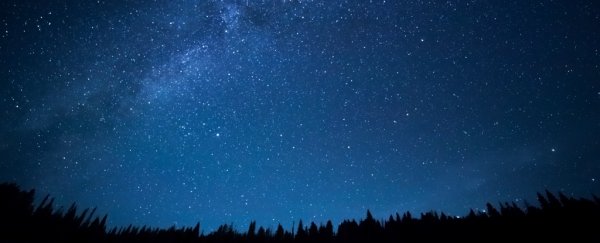Summer soon arrives, and the big planets Jupiter and Saturn will entertain evening onlookers, Venus will distract morning dog walkers and Mars starts a season-long hiatus.
Catch a fattening, waxing moon as it approaches the bright Jupiter (-2.2 magnitude) in the southern sky on the evening of June 2 and then scooting past the planet June 3. Our lunar neighbour sails over the star Spica on June 4.
The large, gaseous planet - appearing to float through the constellation Virgo now - rises in the mid afternoon throughout June and hits due south soon after nightfall early in the month.
Saturn reaches opposition June 15, according to the US Naval Observatory, when the ringed planet is opposite the Sun from Earth's perspective. Think of it as a 'full' Saturn.
For the month, the ringed planet will be zero magnitude, bright enough to see from city locations. Early in the month, it rises around 9pm, but rises near 8:20pm (before the Sun sets) in mid-June. Find it in the later evening, low in the southeastern sky.
It then cruises south and you can catch it before sunrise in the southwest. The full moon (June 9) loiters near Saturn on June 9-10. It's the smallest full moon of the year.
Bon voyage to our neighbouring Mars for the summer. From our Earthly perspective, the Red Planet will be too close to the Sun to see until September - when it returns to the morning sky.
Venus ascends the eastern, morning heavens early in June, brilliantly capturing our cosmic hearts at -4.5 magnitude, quite bright. By mid-month, the planet is slightly less luminous at -4.3 magnitude, which ain't too shabby.
Look to the east before dawn as you're walking the dog or taking a jog. It's hard to miss Venus. The waning crescent moon meets the planet on the mornings of June 20-21.
June features two first-quarter moons for the United States. For the East Coast this month, the first-quarter moon officially occurs at 8:42am Eastern Daylight time on June 1, according to the Naval Observatory.
The second first-quarter moon occurs June 30 at 8:51pm EDT.
Summer officially starts with the solstice June 21 at just after midnight, 12:24am, the point where the sun appears to touch the Tropic of Cancer in the Northern Hemisphere.
During the June 10-17 period, we see the year's earliest sunrise at 5:42am for Washington. Our latest sunset is 8:38pm for June 27-28.
Down-to-Earth events:
● June 2 - See the sun safely, and catch Saturn, Jupiter and other objects through telescopes and binoculars at the Astronomy Festival on the Mall.
Find the cosmic frolic on the corner of the Washington Monument grounds, near 15th Street and Constitution Avenue NW. 6 -11pm Hosted by Long Island's Hofstra University. www.hofstra.edu/dcstars. (In case of rain: School Without Walls High School, 2130 G St. NW.)
● June 5 - "Quasars and Supermassive Black Holes," a talk by astronomer Sylvain Veilleux, at the University of Maryland's Observatory, College Park. Weather permitting, scan the night sky through telescopes afterward. 9pm astro.umd.edu/openhouse.
● June 11 - "The Sudbury Meteor Impact Event," a talk by geologist Bill Cannon, who will discuss the large crater about 250 miles northwest of Toronto, at the Northern Virginia Astronomy Club's regular meeting, 163 Research Hall, George Mason University. 7pm novac.com.
● June 20 - Astronomers converse on the universe and then savour the heavens through telescopes, weather permitting, at the University of Maryland's Observatory, College Park. 9pm astro.umd.edu/openhouse.
● June 22 - "The Grand Tour: Exploring Planets Outside the Solar System," a lecture by astronomer Heather Knutson, California Institute of Technology, at the Lockheed Martin Imax Theater, National Air and Space Museum. 8pm airandspace.si.edu.
2017 © The Washington Post
This article was originally published by The Washington Post.
